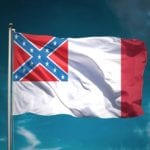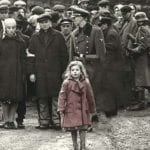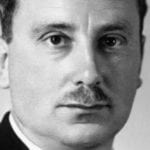 Politics
Politics  Politics
Politics  Weird Stuff
Weird Stuff 10 Freaky Times When Famous Body Parts Were Stolen
 Miscellaneous
Miscellaneous 10 Interesting Things Manufacturers Stopped Making and Why
 Gaming
Gaming 10 Funny Tutorials in Games
 History
History 10 Fascinating Little-Known Events in Mexican History
 Facts
Facts 10 Things You May Not Know about the Statue of Liberty
 Movies and TV
Movies and TV 10 Movie Adaptions That Brought Popular Songs to Life
 Health
Health 10 Miraculous Advances Toward Curing Incurable Diseases
 Miscellaneous
Miscellaneous 10 Undeniable Signs That People’s Views of Mushrooms Are Changing
 Animals
Animals 10 Strange Attempts to Smuggle Animals
 Politics
Politics 10 Countries Where Religion and Politics Are Inseparable
 Weird Stuff
Weird Stuff 10 Freaky Times When Famous Body Parts Were Stolen
 Miscellaneous
Miscellaneous 10 Interesting Things Manufacturers Stopped Making and Why
Who's Behind Listverse?

Jamie Frater
Head Editor
Jamie founded Listverse due to an insatiable desire to share fascinating, obscure, and bizarre facts. He has been a guest speaker on numerous national radio and television stations and is a five time published author.
More About Us Gaming
Gaming 10 Funny Tutorials in Games
 History
History 10 Fascinating Little-Known Events in Mexican History
 Facts
Facts 10 Things You May Not Know about the Statue of Liberty
 Movies and TV
Movies and TV 10 Movie Adaptions That Brought Popular Songs to Life
 Health
Health 10 Miraculous Advances Toward Curing Incurable Diseases
 Miscellaneous
Miscellaneous 10 Undeniable Signs That People’s Views of Mushrooms Are Changing
 Animals
Animals 10 Strange Attempts to Smuggle Animals
Top 10 Army Bases Named After Confederate Generals
The American Civil War was fought between 1861 and 1865, and it holds the distinction of being the first modern war, but there’s more to it than that. The conflict saw more American casualties than any other in the nation’s history, and it tore the country apart.
When the Democratic southern states seceded from the Union to form the Confederate States of America, a large number of military officers followed, and they formed the CSA’s military command.
More than 150 years after the conflict came to an end, ten bases throughout the American south still bear the names of some of the Confederacy’s greatest military leaders.
10 Monuments More Controversial Than The Confederate Statues
10 Fort A.P. Hill, Virginia – Ambrose Powell Hill Jr.
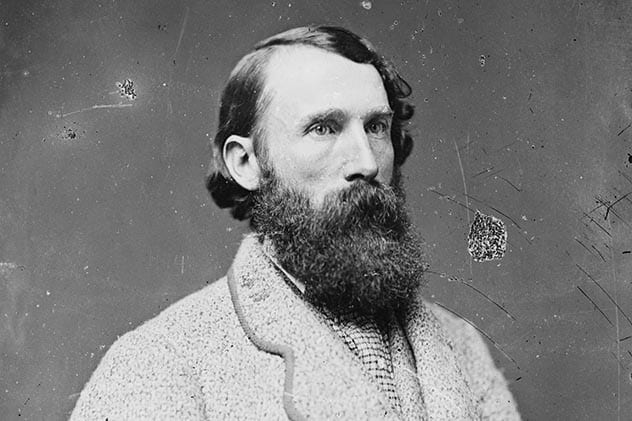
Fort A.P. Hill, Virginia, was founded in 1941 outside the town of Bowling Green, Virginia. The post was established as an Army training facility, and it remains one to this day. The Fort is primarily used as an arms training center, and it is used by all branches of the military, as well as members of U.S. Customs and Border Protection, federal, state, and local law enforcement for weapons training.
The Fort was named in honor of Ambrose Powell Hill, a Confederate General from Virginia, who fought for the United States Army in the Mexican-American and Seminole Wars. He joined the Confederacy when the Civil War began and went on to serve in some of the war’s greatest conflicts. Hill was the commander of the “Light Division,” and one of Stonewall Jackson’s most proficient subordinates.
When Jackson died at the Battle of Chancellorsville, Hill was promoted to Lieutenant General to take command of General Lee’s Third Corps, which he led during the Gettysburg Campaign. He was killed in combat during the Union Army’s push during the Third Battle of Petersburg in 1865, shortly before the war came to a close.[1]
9 Fort Benning, Georgia – Henry Benning

Fort Benning, Georgia, is the home of the U.S. Army Infantry School, the Maneuver Center of Excellence, Armor School, and more. Ft. Benning supports more than 120,000 personnel, their family members, veterans, and support staff, making it a significant Georgian base. The Fort was established to provide Basic Training to Soldiers in 1918.
Fort Benning was named in honor of Henry Benning, the commander of “Benning’s Brigade” during the Civil War. Benning was an opponent of abolition and the emancipation of slaves, which put him strongly in favor of secession following the election of 1860. He served in the U.S. Congress for the Democratic Party in 1851 and remained in politics up to succession, but opted not to serve as a cabinet member in the Confederacy. He instead joined the Confederate Army as a Colonel of the 17th Georgia Infantry in 1861.
Benning attained the rank of Brigadier General, and he led his forces against General Grant during the Overland Campaign. He remained in the fight up to the bitter end. Benning was heartbroken when Confederacy was defeated, and he was one of the last officers to lead his men to the surrender ceremony in April 1865.[2]
8 Fort Bragg, North Carolina – Braxton Bragg
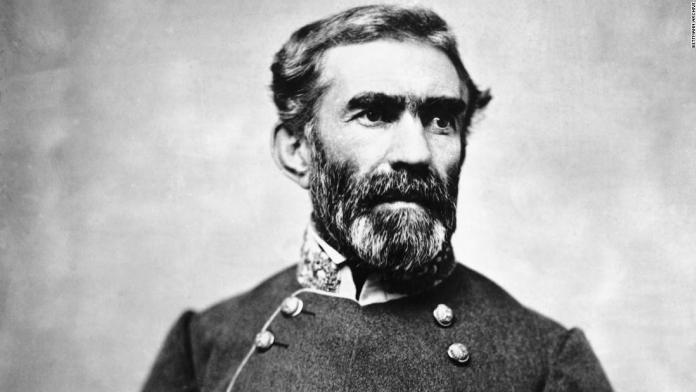
Fort Bragg, North Carolina, is known as being the largest military installation in the world by population, as it supports 50,000 active-duty personnel at any given time. The Fort is located outside Fayetteville and is the home of the Army’s XVIII Airborne Corps, US Special Operation Command, and many more units.
The Fort was established in 1918 to train artillery personnel, and it was named in honor of North Carolina native Braxton Bragg. Bragg served as an officer in the U.S. Army during the Second Seminole and Mexican-American Wars before joining the Confederacy despite being opposed to secession. He was serving as a Colonel in the Louisiana Militia in 1860, and the following year, he was commissioned as a Brigadier General of the Confederate States Army and given command of forces in Pensacola, Florida.
He served in numerous campaigns throughout the war, including the Battles for Chattanooga, the Battle of Chickamauga, and many more. He became an advisor to President Davis and was one of the people credited with finally convincing him that the Confederacy’s cause was lost, which ultimately led to the surrender of the CSA and the end of the war.[3]
7 Fort Gordon, Georgia – John Brown Gordon
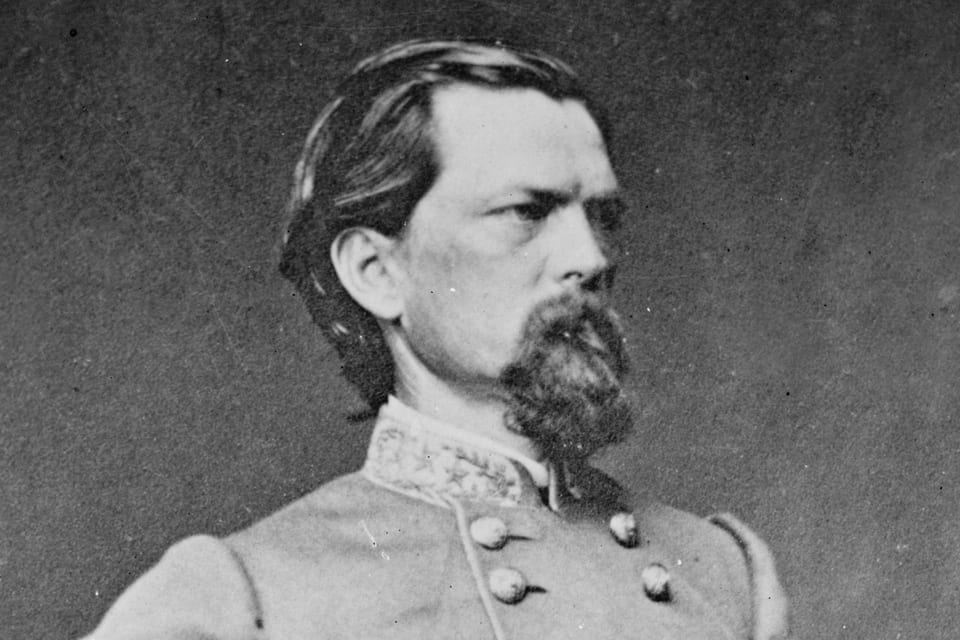
Fort Gordon, Georgia, was established as Camp Gordon in 1917 as the training grounds for the 82nd Division. It was upgraded to a Fort in 1941 and has since become home of the U.S. Army Signal Corps, the Cyber Corps, and more.
Camp Gordon was named in honor of John Brown Gordon, a Confederate officer who joined the CSA without any prior military experience. Though he lacked the knowledge of many of his peers, he was elected Captain of the 6th Alamaba Infantry Regiment. By 1862, he was serving as a Colonel, having seen combat at Seven Pines. Gordon had a knack for being wounded, and during the Battle of Antietam, he was hit multiple times in his arm and leg, but he continued to fight while refusing to go to the read. General Lee was impressed by his fortitude, and after he recovered, he was promoted to Brigadier General.
Gordon continued to lead his men up to the end of the war, having charged the Army of Northern Virginia at Appomattox Court House. He officially surrendered his troops soon after, on April 12, 1865. Following the war, he entered politics in strict opposition to Reconstruction. He served as a U.S. Senator for the Democratic Party and served as the 53rd Governor of Georgia.[4]
6 Fort Hood, Texas – John Bell Hood
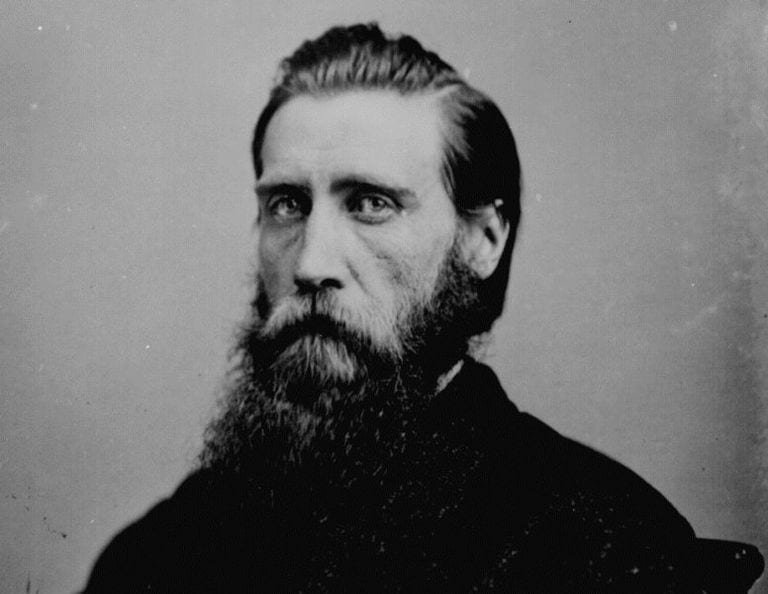
Fort Hood, Texas, was founded in January 1942, so the Army could take advantage of the open terrain to test tank destroyers during World War II. Fort Hood is the most populous military base in the world, and it’s also one of the largest by area, as it encompasses 214,000 acres of land. It’s primarily used as an HQ for the III Corps, the 1st Cavalry Division, and other cavalry units.
Fort Hood gets its name from John Bell Hood, a notoriously brave and aggressive officer who was trained at the United States Military Academy. He served only briefly in the U.S. Army before resigning his commission immediately following the Battle of Fort Sumpter, which kicked off the Civil War. The native Kentuckian’s home state was neutral at the time, so he opted to serve in Texas.
Hood was promoted to Colonel in September 1860 and was given command of the 4th Texas Infantry Regiment. He served in numerous battles, including the Battles of Antietam, Fredericksburg, Gettysburg, Chicamauga, and many more. He was promoted to General temporarily in July 1864 and eventually returned to the rank of Lieutenant General for the duration of the conflict.[5]
Top 10 Surprising Confederates
5 Fort Pickett, Virginia – George Pickett

Fort Pickett, Virginia, is a Virginia Army National Guard post situated outside the town of Blackstone. It is the home of the Army National Guard Maneuver Training Center, and it was established in 1941 for the purpose of simultaneously training more than one Infantry Division at a time.
Fort Pickett was named in honor of George Pickett, a career U.S. Army officer who served during the Mexican-American War. He continued to serve until he was compelled to resign his commission following the Battle of Fort Sumter. Within a month, he was a Colonel in the Confederate States Army, and by 1862, he was a Brigadier General.
Pickett served in numerous campaigns but is likely best known for the ill-fated “Pickett’s Charge” during the Battle of Gettysburg. He stepped across the line to charge nearly a mile to Cemetery Ridge, shouting, “Up, Men, and to your posts! Let no man forget today that you are from Old Virginia!”[6] The assault was a bloodbath, and Pickett was all but inconsolable. His division was mostly lost, as well as his subordinate commanders. He remained active in the war and was a member of General Lee’s party during the surrender at Appomattox Courthouse.[7]
4 Fort Rucker, Alabama – Edmund Winchester Rucker

Fort Rucker, Alabama, was opened during World War II to train aviators. These days, it’s home to Army Aviation and is the post where all Army Warrant Officers (Including the writer of this article) train at Warrant Officer Candidate School. The base was named in honor of Confederate General Edmund Rucker when it was officially opened in 1942.[8]
Edmund Rucker enlisted in the Confederate States Army as a Private soon after the Civil War broke out in 1861. He belonged to Pickett’s Tennessee Company of Sappers and Miners, and he was promoted to Lieutenant by 1862. As he progressed through the ranks, he moved to the Cavalry Batallion and was given command of the 1st East Tennessee Legion, known as Rucker’s Legion,[9] with the rank of Colonel in 1863.
He eventually gained the rank of Brigadier General, though it was never confirmed by the Confederate Congress. Rucker was wounded in action on several occasions and lost his left arm soon after he was captured. His release was secured through an exchange managed by General Nathon Bedford Forrest, the first Grand Wizard of the Ku Klux Klan.
3 Fort Polk, Louisiana – Leonidas Polk
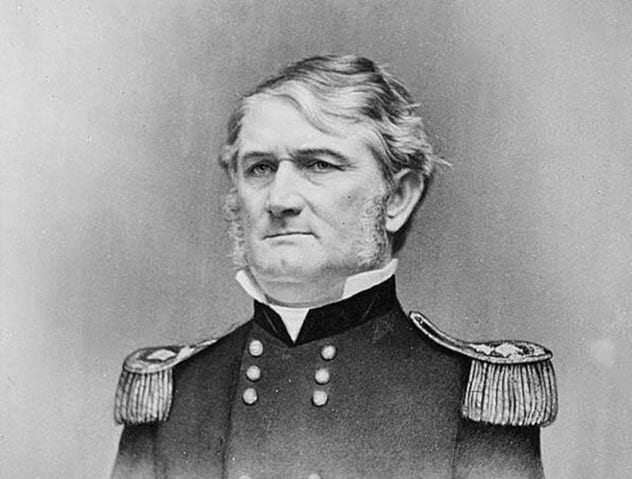
Fort Polk, Louisiana, was originally established as a Camp in 1941 for the Louisiana Maneuvers in anticipation of the U.S. joining World War II. Today, it is home to the Joint Readiness Training Center and various combat units, including the 3rd Brigade Combat Team, 10th Mountain Division.
The Camp was named in honor of the Right Reverend Leonidas Polk, the first Episcopal Bishop of the Diocese of Louisiana. He resigned his position with the church to become a Major General in the Confederate Army after personally offering his services to Jefferson Davis, a classmate of his from his time at West Point. Polk committed a significant blunder early in the conflict when he sent troops to Columbus, Kentucky. The state had attempted to remain neutral but ended up requesting federal aid to deal with the occupation. This resulted in Kentucky being effectively ceded to the United States.
Polk commanded troops in the Army of Mississippi and Tennessee, managing to fight in numerous battles. He brought 20,000 men to Georgia while serving as the confederate States Army’s second in command. While scouting outside of Marietta, Georgia, in June 1864, he was spotted by Union Troops, who directed artillery fire at the General, killing him with the third shot.[0]
2 Camp Beauregard, Louisiana – Pierre Gustave Toutant-Beauregard
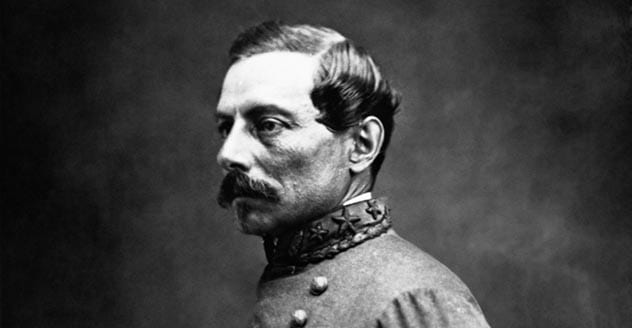
Camp Beauregard, Louisiana, was established in 1918 as a training base for the 17th Division in preparation for the United States’ entry into World War I. The Camp is currently operated by the Louisiana Army National Guard, which uses it primarily as one of its main training areas.
Camp Beauregard was named after Pierre Gustave Toutant-Beauregard, a United States Military Academy graduate who served during the Mexican-American War. General Beauregard was the first Brigadier General in the Confederate States Army, and one of the most prominent to arise early in the conflict. He was given the rank of General five months after joining the Confederacy, making him the fifth highest-ranking officer in the CSA. Beauregard commanded his troops to fire the first shots of the Civil War, after his demand that the command at Ft. Sumter surrender to the CSA. For his action, he was known as “The Hero of Fort Sumter,” and he remained popular throughout the war.
General Beauregard survived the war and even though he remained a member of the Democratic Party for the rest of his life, he paradoxically went on to become an advocate for black civil rights and suffrage by supporting the Republican Party. He worked as a railroad executive and was an early promoter of the Louisiana Lottery, which, at the time, was the only legal lottery in the United States.[11]
1 Fort Lee, Virginia – Robert Edward Lee
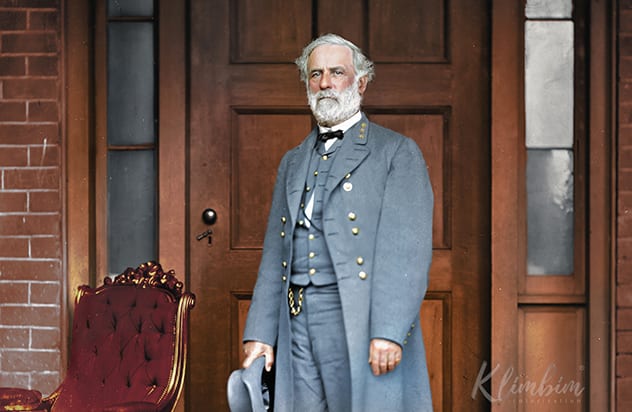
Fort Lee, Virginia, was established early in the Civil War as a training camp west of Richmond. It was originally known as Camp Lee, and it grew into a Fort as World War I began intensifying. Today, it is the home of the U.S. Army Combined Arms Support Command, the Army Quartermaster, Ordnance, and Transportation schools.
The Camp was named in honor of Confederate General Robert E. Lee. Lee was a prominent U.S. military officer who served during the Mexican-American War. He also worked as the superintendent of the Military Academy at West Point, and though he was initially reluctant, as he opposed secession (despite remaining a staunch supporter of the Democratic Party), he resigned his commission to join the Confederate States Army.
General Lee was one of the first to be given the rank of full General, and he was given command of the forces in Western Virginia.
Lee invaded Maryland and was primarily responsible for the push into Gettysburg, which resulted in one of the most significant CSA defeats of the war. From that point, he commanded forces up to the end of the American Civil War, having lost the vast majority of his Army by April 1865.[12]
10 Ways Things Would Be Different If The Confederate States Had Won


